Uniting UX and SEO: Creating a High-Performing Website
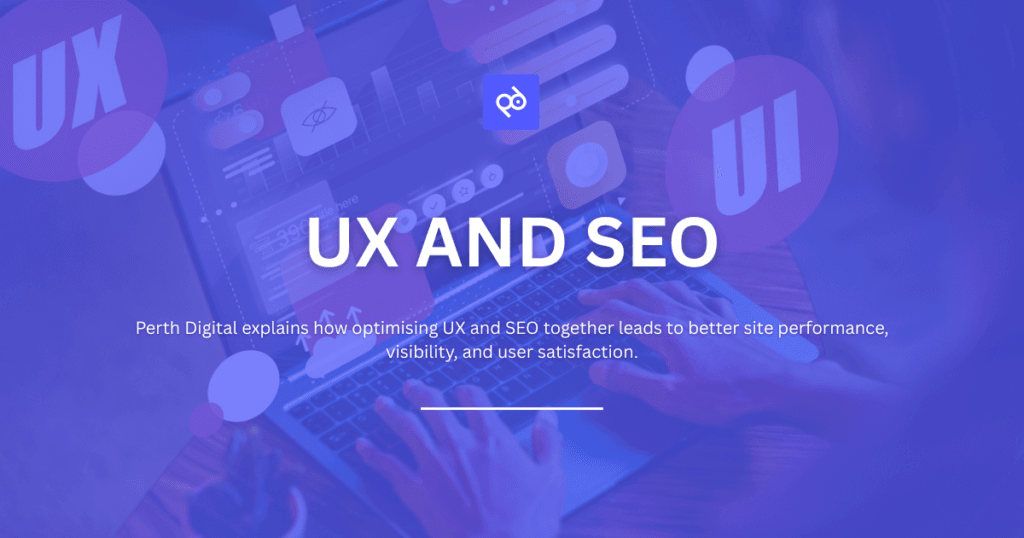
To build a truly effective website, both user experience (UX) and search engine optimisation (SEO) must work in harmony. While traditionally treated as separate disciplines, integrating them results in higher engagement, better usability, and improved search rankings. Search engines favour websites that users find valuable. By combining thoughtful design with SEO best practices, you can create a site that satisfies both user needs and algorithm criteria. Why UX and SEO Are Both Critical UX ensures that users can interact with your site easily, while SEO makes sure they find it in the first place. Together, they form the backbone of a high-performing website. A fast, responsive, and well-structured site not only improves user satisfaction but also ranks better on search engines like Google. Elements such as mobile compatibility, intuitive navigation, and fast loading speeds impact both how users experience your site and how search engines evaluate it. UX in Focus: Making Every Interaction Count User experience goes far beyond visual appeal. It’s about ensuring a smooth journey from entry to conversion. Key aspects include: Intuitive Navigation Good navigation ensures users can find the information they need without confusion or delay. An intuitive menu structure, clear labels, and logical page hierarchy allow visitors to move through your site effortlessly. When users don’t have to think hard about where to go next, they’re more likely to stay engaged and complete desired actions, such as filling out a form or making a purchase. Quick Load Times Speed is a non-negotiable in user experience. If your website takes more than a few seconds to load, users will likely leave before engaging with your content. Slow load times increase bounce rates and negatively impact search rankings. Optimising image sizes, reducing unnecessary scripts, and leveraging browser caching are effective ways to keep your site fast and responsive. Mobile Responsiveness With mobile devices accounting for the majority of web traffic, your site must function smoothly on all screen sizes. Mobile responsiveness means content adjusts dynamically to fit different devices without compromising usability. Buttons should be easy to tap, text must be readable without zooming, and page elements should load correctly. A consistent mobile experience is key to keeping users engaged and meeting Google’s mobile-first indexing standards. Strong UX encourages longer visits and repeat traffic, both positive signals to search engines. SEO Essentials: Visibility Starts with Optimisation SEO is your strategy for ensuring that your content reaches the right audience. Core components include: Targeted Keywords for Discoverability Keywords form the foundation of SEO by connecting your content with the search terms users are actually typing into Google. Identifying and integrating relevant keywords naturally throughout your pages, especially in headings, meta tags, and body content, helps your site appear in search results for the right audience. Keyword research ensures you’re targeting terms with strong intent and decent search volume, increasing the chances of driving quality traffic to your site. Quality Content That Answers User Queries Search engines prioritise content that provides genuine value and answers user questions. Quality content is well-researched, clearly written, and tailored to your audience’s needs. It should also be regularly updated to remain accurate and relevant. By creating informative and engaging content, you not only improve your SEO but also keep users on your site longer, an important signal for search engines. Internal Links That Guide Navigation and Distribute Page Authority Internal linking strengthens your site architecture by helping users and search engines navigate between related content. Strategically placed internal links allow you to guide visitors to deeper parts of your site, increasing their time on page and improving user experience. From an SEO perspective, internal links also help distribute link equity across your site, making it easier for search engines to understand and rank your content effectively. Search engines assess how well your site meets user needs. Good UX improves these signals, making UX and SEO mutually reinforcing. How UX Enhances SEO Performance When UX is optimised, SEO benefits naturally. Here’s how: This holistic approach aligns user satisfaction with technical performance, leading to sustainable growth in traffic and conversions. Key UX Elements That Support SEO Certain UX factors directly influence your SEO outcomes. Focus on these areas to optimise both: 1. Load Speed Slow-loading pages deter users and lower rankings. Optimise images, minimise scripts, and use caching to accelerate performance. 2. Responsive Design Ensure seamless experiences across all devices. Use flexible layouts and media queries to adapt to various screen sizes. 3. Mobile-First Indexing Google prioritises your site’s mobile version. Design with mobile navigation, content accessibility, and touch functionality in mind. 4. UX Writing and Content Intent Clear, actionable language that reflects user goals leads to more meaningful interactions. Align CTAs and content with user journeys. 5. Logical Site Architecture Organise content into intuitive categories with proper linking. This enhances both SEO crawlability and user navigation. 6. UI Design and Accessibility Ensure buttons, menus, and forms are visually intuitive and accessible. A clean interface helps guide users effortlessly. Tracking UX Metrics That Influence SEO Monitoring key UX performance indicators allows for ongoing SEO improvement. Behavioural Metrics: Technical Metrics: These metrics should be regularly reviewed to identify friction points and optimise performance. Conclusion Aligning UX and SEO is no longer optional, it’s essential. A seamless user experience complements SEO strategies, resulting in higher visibility and greater user satisfaction. By refining both aspects, you build a website that performs well, ranks higher, and serves your audience effectively. At Perth Digital, we’ll help you combine UX and SEO in a seamless and effective way. Get in touch with us today for a detailed SEO strategy catered to your needs!
SEO Pricing: What It Really Costs to Compete in Search
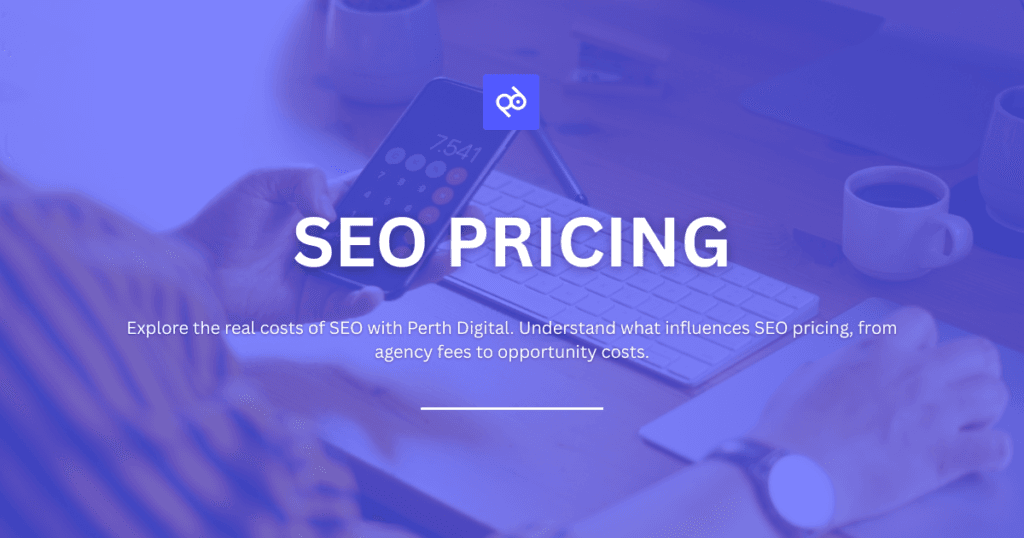
SEO promises visibility, traffic, and long-term growth, but only if it’s done right. And that takes an investment. From technical audits to content strategy, the full cost of SEO is often misunderstood or underestimated. At Perth Digital, we believe in transparency. So let’s break the SEO pricing all down. SEO Cost Breakdown: What You’re Really Paying For SEO isn’t free, even though organic clicks don’t come with a price tag. Real SEO success requires time, tools, expertise, and consistent effort so of course this leads to a sufficient SEO pricing. 1. Agencies and Consultants 2. In-House SEO 3. Tools and Software 4. Content Creation 5. Time and Internal Bandwidth What Impacts the Final SEO Price Tag? SEO is not one-size-fits-all. Here’s what shapes your cost: Business Size Bigger businesses = more complex websites = higher investment. Small local businesses often benefit from more targeted, cost-effective SEO. Website Scope and Project Complexity Large sites need more audits, more content, and more architecture support. E-commerce? Multi-location? Expect your costs to rise. SEO Provider’s Experience and Location Top-tier agencies charge more but they also deliver more. Local providers like Perth Digital bring insight and flexibility without the big-agency bloat. Pricing Models Existing SEO Performance Starting from scratch? You’ll need SEO audits, keyword research, and foundational fixes. Already ranking well? Maintenance and content refreshes might be all you need. Your Marketing Goals Rankings? Leads? Brand visibility? Your goals determine how aggressive (and costly) your SEO plan should be. Your Budget Be upfront about what you can spend. The best agencies, like Perth Digital, can work within your limits while still delivering results. Cheap SEO vs Quality SEO The Trap of Cheap SEO Quality SEO = Long-Term Growth SEO vs Other Channels: Where Should You Invest? Paid Ads Influencer Marketing Content Marketing Bottom line? SEO is part of a larger ecosystem, not a silver bullet. It works best when integrated thoughtfully into your full digital marketing strategy. SEO’s Hidden Cost: Opportunity Spending on SEO means not spending somewhere else. Could that money go to product development? Sales enablement? PPC? Always ask: “Is SEO the best use of this budget right now?” Sometimes the answer is yes. Sometimes, not yet. How to Decide If SEO Is Worth It If yes, then SEO might be your smartest investment. Work with Perth Digital Looking for an SEO partner? Perth Digital offers custom SEO strategies that deliver measurable growth, no fluff, just results with reasonable SEO pricing. At Perth Digital, we craft SEO strategies around your unique goals and help you maximize ROI with a clear, actionable plan. Ready to stop guessing and start growing? Get in touch with us today!
10 Proven Tactics for SEO Conversions
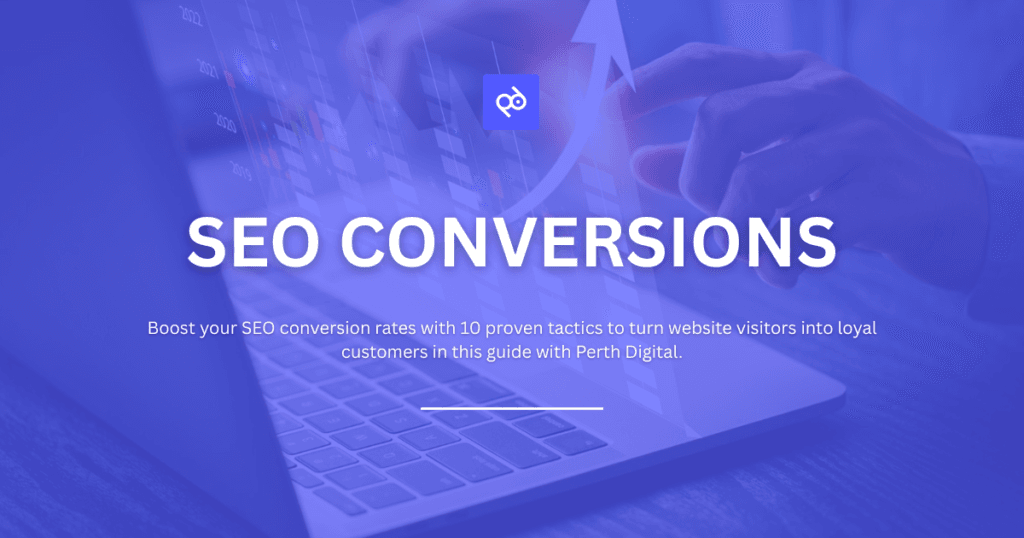
In today’s crowded digital marketplace, drawing people to your website is only the beginning. What truly matters is what happens after they arrive. Are they browsing aimlessly or taking meaningful actions like making a purchase or signing up for your newsletter? This is where SEO conversions step in. It’s not just about ranking high on Google; it’s about translating visibility into measurable results. What Are SEO Conversions and Why Do They Matter? SEO conversions refer to using search engine optimization not only to attract traffic but to guide that traffic toward completing specific goals. Whether it’s downloading an eBook or filling out a contact form, each action brings a user closer to becoming a customer. Think of your SEO strategy as a storefront on a busy street. It’s one thing to get foot traffic, but if no one walks in or buys anything, what’s the point? Optimizing for conversions makes that storefront so compelling that visitors have to come inside. The ultimate goal? Maximize ROI by ensuring every visitor has a higher chance of becoming a lead or a paying customer. 10 Strategies to Boost SEO Conversion Rates 1. Prioritize Page Load Speed Compress Images: Large, unoptimized images significantly slow down web pages. By compressing them without compromising quality, you reduce load times, leading to a better user experience and higher retention rates. Use Browser Caching: Browser caching allows frequent visitors to store parts of your site in their browser, which decreases the load time when they return. A faster repeat experience increases the likelihood of future conversions. Reduce Server Response Time: The time your server takes to respond to a user’s request directly affects site speed. Optimizing server performance, upgrading hosting, or using a Content Delivery Network (CDN) can dramatically improve responsiveness. 2. Optimize for Mobile Users Responsive Design: A responsive website automatically adjusts to various screen sizes, offering a seamless experience on desktops, tablets, and smartphones. This adaptability keeps users engaged regardless of the device they’re using. Touch-Friendly Buttons: On mobile devices, buttons should be large enough and spaced adequately for tapping with a finger. This prevents user frustration and encourages smoother navigation through your conversion funnel. Streamlined Mobile Navigation: Mobile users expect simplicity. Keeping menus concise and prioritizing essential content ensures they find what they need quickly, increasing the chances of conversion. 3. Use Structured Data for Better Visibility Enhanced Search Listings: Structured data allows search engines to display extra information in your listings, like reviews, prices, and FAQs. These rich snippets make your results more eye-catching and informative, improving click-through rates. Improved Content Understanding: Schema markup helps search engines understand the context of your content, which can improve your rankings for relevant queries and attract better-matched visitors who are more likely to convert. Higher Quality Traffic: By making your listings more informative, structured data appeals to users with strong intent. This increases the chance that clicks to your site will result in meaningful actions. 4. Write Irresistible Meta Titles & Descriptions Concise and Keyword-Rich: Your meta titles and descriptions should include relevant keywords while staying within character limits. This makes them appealing to both users and search engines. Highlight Value Propositions: Use your meta tags to communicate clear benefits. Whether it’s free shipping, expert tips, or quick downloads, showing value can entice users to click and convert. Encourage Action: Including verbs like “discover,” “learn,” or “buy now” within your descriptions creates urgency and encourages users to take the next step. 5. Test, Tweak, Repeat: A/B Testing Compare Variations: A/B testing involves showing two versions of a webpage element, like a CTA button or headline, to different users. Analyzing which version performs better helps refine your site for conversions. Optimize User Experience: Through repeated testing, you can determine the most effective combinations of design and content. Small changes, like button color or layout, can significantly impact user behavior. Make Informed Decisions: Instead of guessing what works, A/B testing provides real data. This scientific approach minimizes risks and maximizes the impact of your optimizations. 6. Build Trust Through Security Implement HTTPS: Securing your website with HTTPS encrypts data exchanges between your site and its visitors. This not only protects sensitive information but also signals trustworthiness to users and search engines. Display Trust Signals: Features like trust badges, customer testimonials, and clear privacy policies build credibility. When users feel safe, they are far more likely to engage and convert. Secure Transactions: For eCommerce sites, implementing secure checkout processes is essential. Users are more likely to complete purchases when they know their payment details are safe. 7. Design for Ease of Use Simplify Navigation: A clear and intuitive navigation structure helps users find what they’re looking for without confusion. This reduces frustration and keeps visitors moving toward your conversion goal. Readable Design: Choose clean fonts, appropriate spacing, and a logical content hierarchy. Making your site visually accessible improves user satisfaction and encourages prolonged engagement. Minimize Form Friction: Keep forms as short and simple as possible. Ask only for essential information to reduce drop-off rates and increase the number of completed submissions or sign-ups. 8. Strategic Link Building for Navigation and Credibility Internal Linking for Flow: Well-placed internal links guide users through your site, exposing them to related content and keeping them engaged longer. This can lead to more conversions through increased exposure to key pages. External Links for Authority: Linking to credible sources shows that you’ve done your research and builds trust with your audience. This can improve your reputation and indirectly support conversions. Boost SEO Rankings: A balanced mix of internal and external links contributes to better search engine rankings. Higher visibility in search means more qualified traffic, and with the right structure, higher conversions. 9. Tap into the Power of Local SEO Include Business Info: Displaying your address, phone number, and location map reassures visitors that you’re a real, local business they can trust. This simple step greatly increases conversion potential for local users. Encourage “Near Me” Discoverability: Local SEO tactics help you appear in location-based searches,
How to Write An SEO Headline That Ranks and Converts
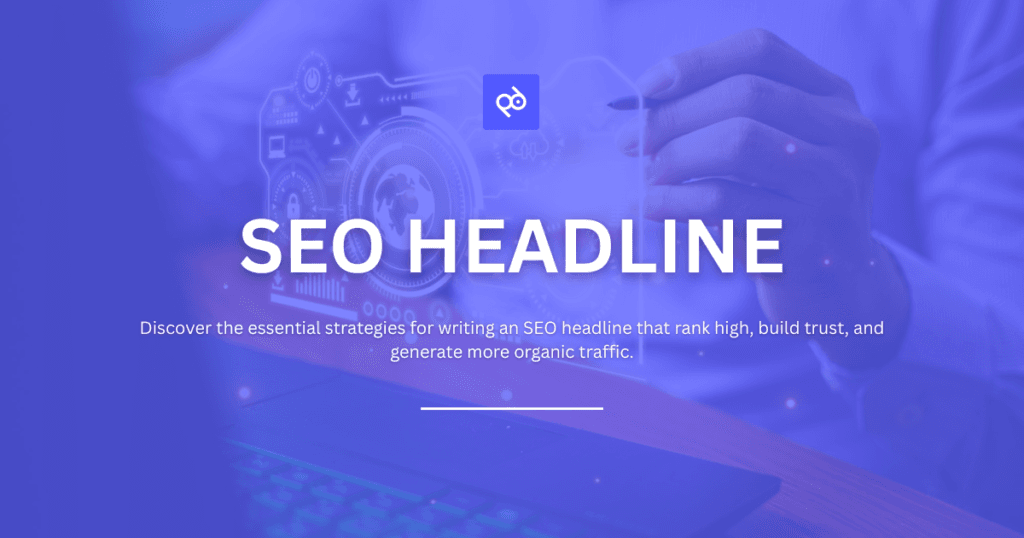
Your headline is often the first, and sometimes only, chance you have to make an impression. A strong SEO headline not only captures attention but also helps your content rank higher on search engines. All well and good, right? But the real challenge? Writing headlines that are SEO-optimised without slipping into clickbait territory. But don’t you worry. We’ll show you how to craft SEO-friendly headlines that drive clicks, boost rankings, and win reader trust. Understanding SEO Headline: More Than Just Clicks An SEO headline serves two masters: search engines and human readers, which means your headline not only needs to appeal to your core audience but also is easier to crawl for search engines. Unlike a regular headline, an SEO headline is designed to: When done well, an SEO headline improves both your visibility in search results and your site’s engagement rates. Why Crafting the Right SEO Headline Matters A compelling SEO headline does more than pique curiosity, it directly impacts your traffic and conversions. It can also increase your click-through rates by making your page stand out among search results. When users see a clear, compelling headline, they’re much more likely to click on your content rather than a competitor’s. Additionally, crafting effective headlines can boost your rankings. Search engines like Google pay close attention to engagement signals, including click-through rates, when determining how to rank pages. A higher engagement rate signals to Google that your content is valuable and relevant. Finally, SEO-optimised headlines drive qualified traffic by attracting users who are genuinely interested in what your content offers. Instead of drawing in random clicks, a well-structured headline ensures that the people landing on your page are more likely to stay, engage, and ultimately convert. On the flip side, a poorly written headline can tank your content’s performance, even if the body is brilliant. SEO Headline vs. Clickbait: Knowing the Difference An engaging SEO headline is not the same as clickbait. Clickbait might promise shocking revelations (“You won’t believe what happened!”) but often leaves readers disappointed when the content doesn’t match up with their preconceived expectations which could damage their trust. You should focus on creating a genuine SEO headline, which: Example: SEO Headline: “10 Proven Strategies to Boost Your Website Traffic” Clickbait: “This One Weird Trick Will Change Everything!” Building trust starts with being honest about what readers can expect. You want your audience to become potential long-term customers, not disappointed leads. How to Write An SEO Headline That Works Master the art of SEO headline writing with these key strategies: 1. Prioritise Relevant Keywords Ensure your headline features your target keyword, naturally and smoothly. Example: If targeting “SEO headline,” create titles like “How to Craft the Perfect SEO Headline for Higher Rankings.” Avoid keyword stuffing, a clunky headline feels forced and turns readers away and would signal to search engines that your content might not be that good. 2. Keep It Short, Clear, and Specific Usually search engines only show 50-60 characters so if you want the entirety of your headline to show, write it in that limit. Be direct about what the article offers: no ambiguity, no confusion. 3. Use Numbers to Set Expectations List formats work well because they offer predictable value. And people tend to gravitate towards clear numbers because they know what to expect. Example: “The 7 Best Local SEO Tools to Boost Your Local Search Rankings (2024)” Tip: If you use numbers in your list, it’s better to use odd numbers rather than even ones. 4. Tap Into Emotional Drivers Appeal to emotions like curiosity, fear of missing out (FOMO), or the desire for success, without resorting to hype. Example: “Niche Keyword Research: Mastering Targeted SEO Strategies” 5. Make It Actionable Use strong action words that tell readers what they’ll gain. Words like “boost,” “discover,” “learn,” or “master” energise your headlines. Example: “Organic Content: Boosting Engagement and Authenticity” 6. Sprinkle in Power Words Words like “ultimate,” “essential,” or “proven” add authority to your headlines. Example: “Primary Keywords: Essential Insights and Strategies” When using these power words, make sure your content also provides content that matches the energy of the words you use in your headline. Used thoughtfully, power words build credibility and make headlines more persuasive. Building a High-Impact SEO Title Formula While creativity matters, a proven SEO headline structure might give you some consistency when crafting headlines for your posts. Or they could provide you with inspiration looks something like this: [Number/Action Verb] + [Adjective] + [Keyword] + [Benefit] Example: “7 Proven SEO Headline Strategies to Drive More Organic Traffic” Need Inspiration? Here Are Some Winning SEO Headline Examples Common Mistakes to Avoid When Writing An SEO Headline Even experienced writers sometimes fall into traps when creating SEO headlines. Ensure you minimise the chance of making these mistakes: Headlines That Build Trust and Drive Results Creating SEO headlines isn’t about tricks, it’s about clarity, value, and relevance. Focus on these three pillars, and your headlines will not only earn more clicks but also foster long-term trust and loyalty from your audience. Need expert help crafting SEO-optimised headlines that actually convert?Reach out to Perth Digital, and let’s build content strategies that deliver real results.
Mastering SEO: How to Build a Content Outline in 6 Simple Steps

Do you often find yourself facing a blank page when starting a blog post? Well, you’re not alone. It can be hard to put ideas onto paper, but with a smartly crafted content outline, you’ll be producing effective, SEO-friendly content in no time. Investing just 15–20 minutes into creating a strong outline can significantly boost the quality of your writing and improve your chances of ranking higher in search results. What is a Content Outline? A content outline acts as your blueprint, organising key points and shaping the structure of your article before you even start writing. By creating an outline, you give yourself a broad look of your content, which helps you stay on track when writing. A solid outline usually includes: Keeping a consistent template across your projects helps speed up your process and maintain quality content over time. Why Content Outlines Are Essential for SEO Content outlines are more than writing aids, if used correctly, they serve as useful strategic SEO tools. Here’s why: How to Create a Content Outline in 6 Steps For the following sections, we’ll dive head first into creating a content outline that not only provides you with solid structure but also aids you in connecting with your core audience. Here are simple steps to achieve the perfect SEO content outline: Step 1: Choose a Primary Keyword and Define Search Intent Start by selecting a target keyword that aligns with your SEO goals. Use tools like Ahrefs, SEMrush, or Google’s “People Also Ask” section for keyword research and inspiration. Next, define the search intent: Is the reader seeking information, comparing options, navigating to a brand, or ready to make a purchase? Aligning your content with the correct intent ensures it meets user expectations, which is a major factor for ranking well. Step 2: Specify Content Format There are many types of content, choosing which one depends entirely on what you plan on conveying and what your target audience wish to see. Decide early what type of article you’re writing: Choosing the right format helps organise your thoughts and deliver the value readers (and Google) are looking for. Step 3: Collect Related Keywords and Organise Sections Expand beyond your primary keywords by gathering long-tail and semantic keywords (keywords which are semantically related). Then proceed to group them logically into major sections and subsections of your article. You can also choose to embed secondary keywords naturally into your headings in order to boost your SEO footprint without keyword stuffing. Step 4: Structure with Headings and Subheadings To make it easier for human navigation as well as search engine navigation, structure your content with subsequent headings and subheadings using H2s, H3s, and (if needed) H4s. If you are still unsure of the best way to title your headings, look at what your competitors are doing. But remember, use them as reference, don’t copy exactly since Google won’t appreciate stolen content. Add a bit of your own personal flair and humanise your writing to appeal to your target audience. Step 5: Plan Links and Visual Elements While writing, you have to keep in mind and map for opportunities for: Also, earmark spots for visuals like images, charts, or infographics. Remember to optimise image alt text with relevant keywords for an SEO boost. Step 6: Draft SEO Metadata Metadata such as meta titles and meta descriptions are crucial for search engines and users to get a glimpse of what your content could be about. So make sure to make them as engaging as possible. Optimise these metadata as part of your on-page SEO optimisation before putting them on your website: Incorporate your primary keyword naturally into these fields to strengthen your search visibility right from the start. Content Outlines Are Your SEO Foundation A thoughtful outline saves time, improves writing quality, and gives your content the best chance to shine in search results and you can do it in 6 simple steps. Need expert help scaling your SEO efforts? Perth Digital is perfect for tailored strategies that drive real results. Contact us today!
Mastering Technical SEO: Everything You Need to Know
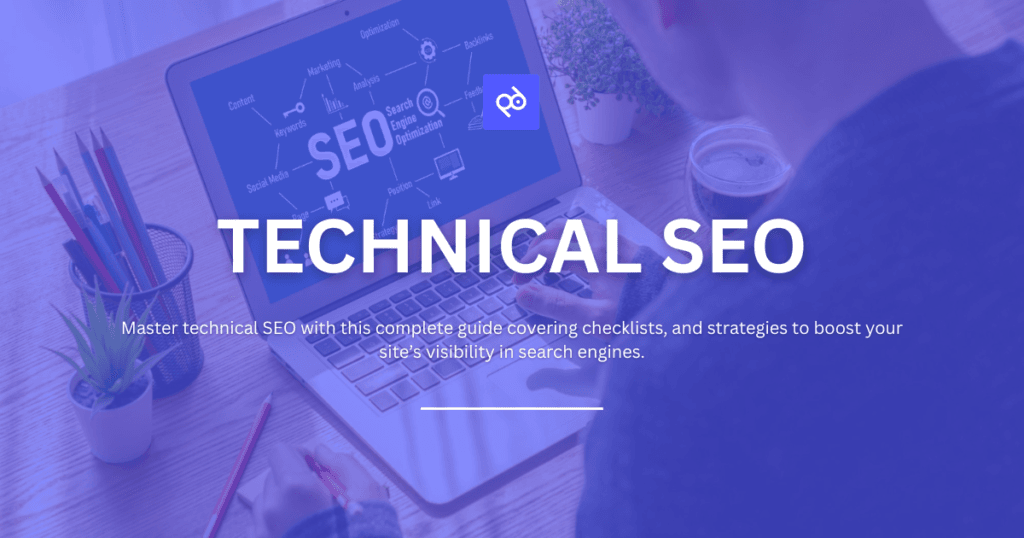
There are a lot of types of SEO, amongst them is technical SEO, which forms the foundation that allows your site to be crawled, indexed, and ranked effectively. We’ll walk you through everything you need to know to master technical SEO, from the basics to advanced strategies, with real-world examples and a practical technical SEO checklist to help you get started. What Is Technical SEO? Let’s start with the definition. What is technical SEO? Technical SEO refers to the process of optimising the technical aspects of your website to improve its visibility and performance in search engines. It’s not about content or keywords but rather how well search engines can access, crawl, interpret, and index your website. At its core, technical SEO ensures your site is fast, mobile-friendly, secure, and easy for search engines to understand. How Technical SEO Works Technical SEO works behind the scenes to ensure your website is properly set up for search engines to discover, crawl, understand, and rank your content effectively. By doing this, you ensure that whatever quality content you put out will undoubtedly be shown to your intended audience. While your users focus on the look, feel, and content of your site, search engines are more concerned with structure, speed, and signals. Here’s how technical SEO works step by step, and what it actually looks like in practice. 1. Discovery: Search Engines Find Your Site How it works: Before your site can show up in search results, it has to be found. Search engines use links and sitemaps to discover new content. What technical SEO looks like here: Example: If you publish a new blog post about “local SEO“, but don’t add it to your sitemap or link to it from any existing page, Google may not discover it at all, which also means your intended audience won’t be able to see it either. 2. Crawling: Bots Explore Your Website How it works: Once discovered, bots (like Googlebot) crawl your website by following internal links from page to page. What technical SEO looks like here: Example: If your website has too many unnecessary redirects or very slow-loading scripts, bots may crawl fewer pages, and that could mean some don’t get seen at all. 3. Indexing: Content Gets Stored How it works: After crawling a page, Google decides whether to index it, that is, store and display it in search results. What technical SEO looks like here: Example: If you have multiple product pages for the same T-shirt in different colours, canonical tags help Google index just one version instead of treating them all as separate (and possibly duplicate) pages. 4. Understanding: Search Engines Interpret the Page How it works: Once a page is indexed, Google needs to understand what it’s about and how it fits into the wider context of the web. What technical SEO looks like here: Example: A recipe page that uses structured data (Recipe schema) can appear in rich results with star ratings, cooking time, and ingredients, helping Google understand the page instantly. 5. Ranking: Results Are Shown Based on Value How it works: Once understood, pages compete to rank for relevant search queries. When doing SEO, the ideal position to be on Google Search Engine Results Pages (SERPs) is from position 1 to 10. The higher the position (position 1 – 3), the more people see your content and are more likely to click and view. Technical SEO helps your page meet performance and quality standards. What technical SEO looks like here: Example: If your site loads quickly on mobile, has stable layouts, and doesn’t frustrate users with pop-ups, Google sees this as a positive user experience, and is more likely to rank your pages higher. The Technical SEO Checklist Now that you have a firmer grasp on what technical SEO is and what it looks like in action, let’s break down the core elements of technical SEO into a checklist you can use to audit and improve your website. 1. Ensure Your Site is Crawlable The first step of all steps when it comes to technical SEO is to make sure your website is easy for search engines to crawl. You can do this by doing the following: Example: If your product page isn’t included in your sitemap and has no internal links, search engines might not discover it. 2. Make Sure Your Site is Indexable To make it possible for search engines to store your content, you have to: 3. Optimise for Speed and Performance Having a slow loading page or post can have a detrimental impact on your viewership since people don’t like waiting. According to a study conducted by Google, if visitors have to wait for more than 3 seconds, they’ll leave immediately. So it’s best to optimise your content for speed and performance. You can: Example: A site that loads in 1.5 seconds is more likely to retain users and rank higher than one that takes 5 seconds. 4. Make Your Website Mobile-Friendly There’s no denying the hold our phones have on us: the entire world in the palm of your hand. According to industry analysis, the number of smartphone users is approximately 7.12 billion. That’s a lot. So it goes without saying that if you want to reach more users, you have to optimise your content for mobile. You can either cooperate with your develop and design teams to come out with appropriate optimisation for your content or you can choose website templates that allow for a mobile version. 5. Secure Your Site with HTTPS Make sure your site’s security is good. This not only lets your visitors know that your site is a trusted site that cares about its users’ online privacy but also signals to search engines that your website is secure and credible. 6. Fix Crawl Errors Sometimes there are bugs in pages on your website that prevent a search engine bot from crawling. In order to avoid these issues, it’s best if you do the following: 7. Optimise